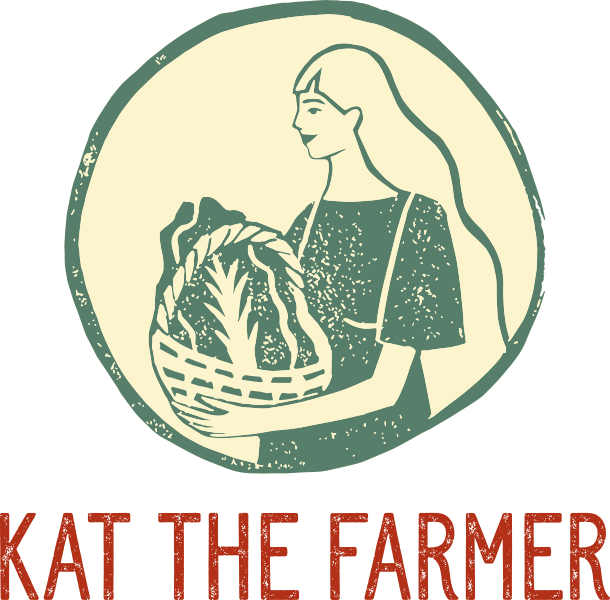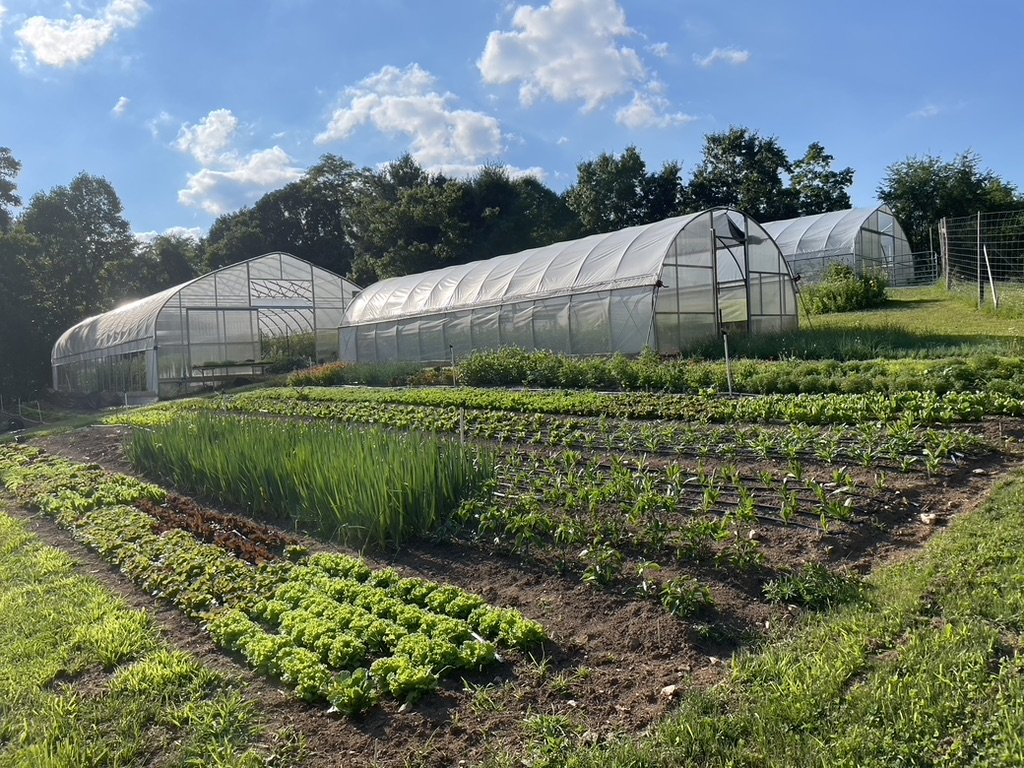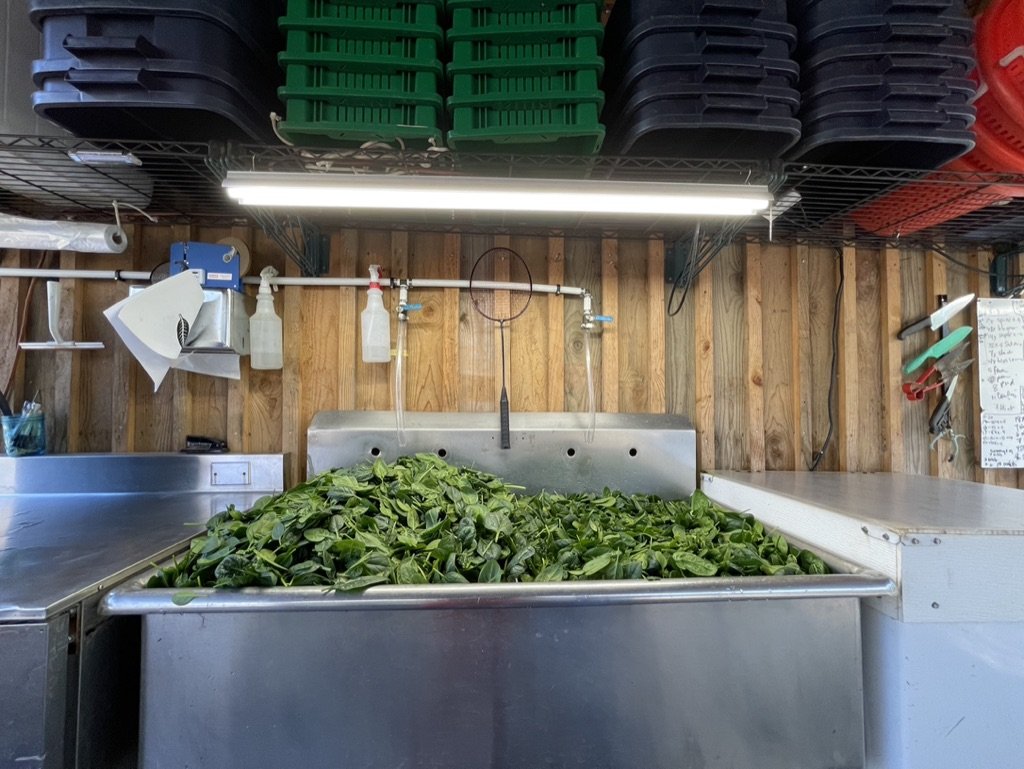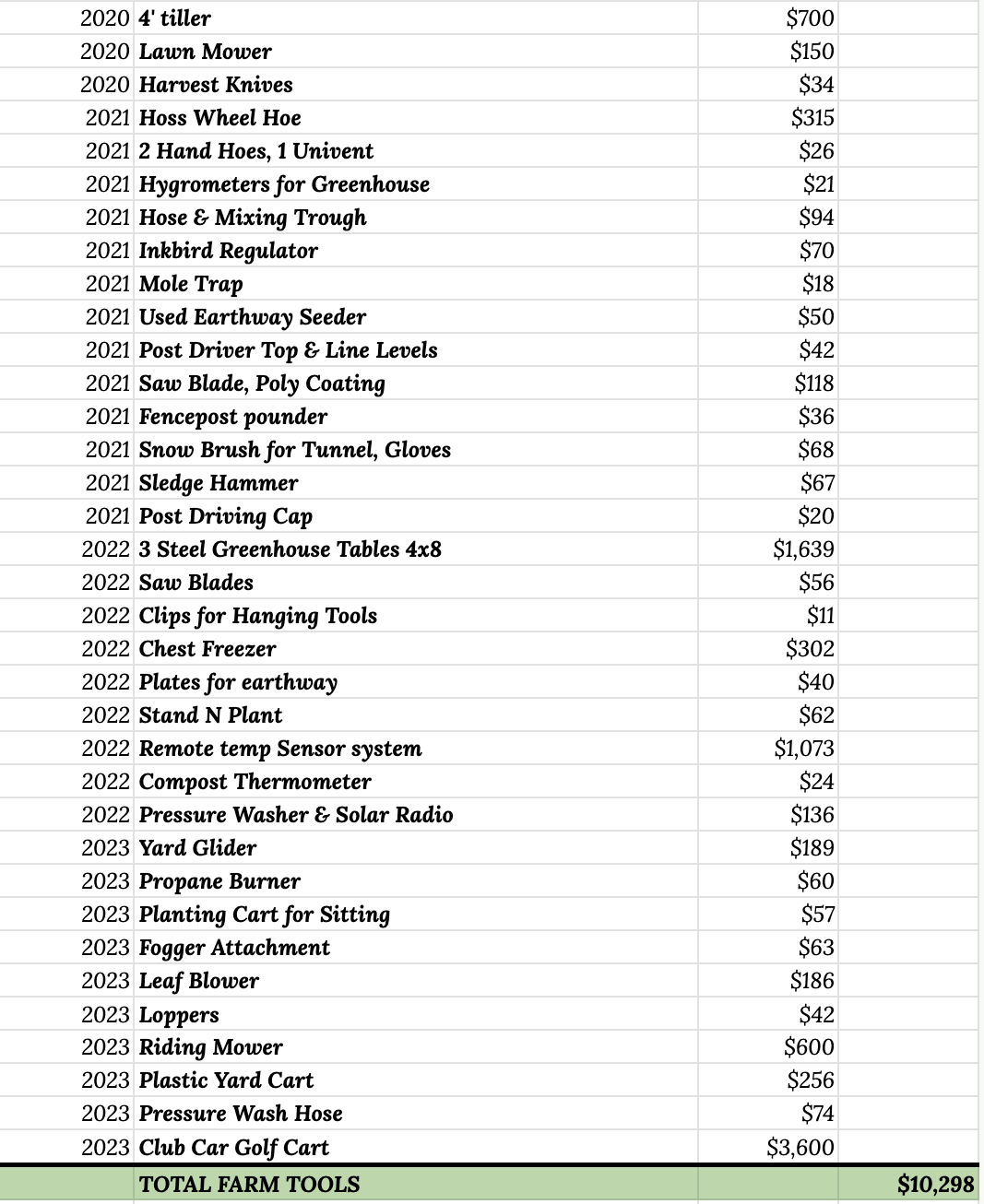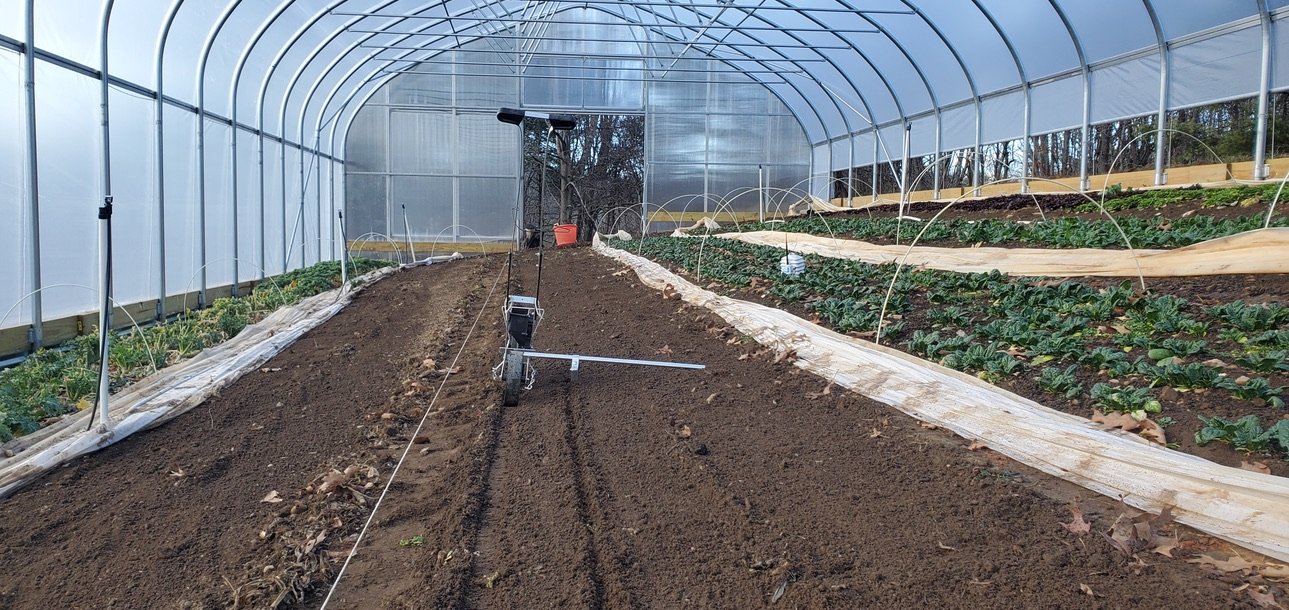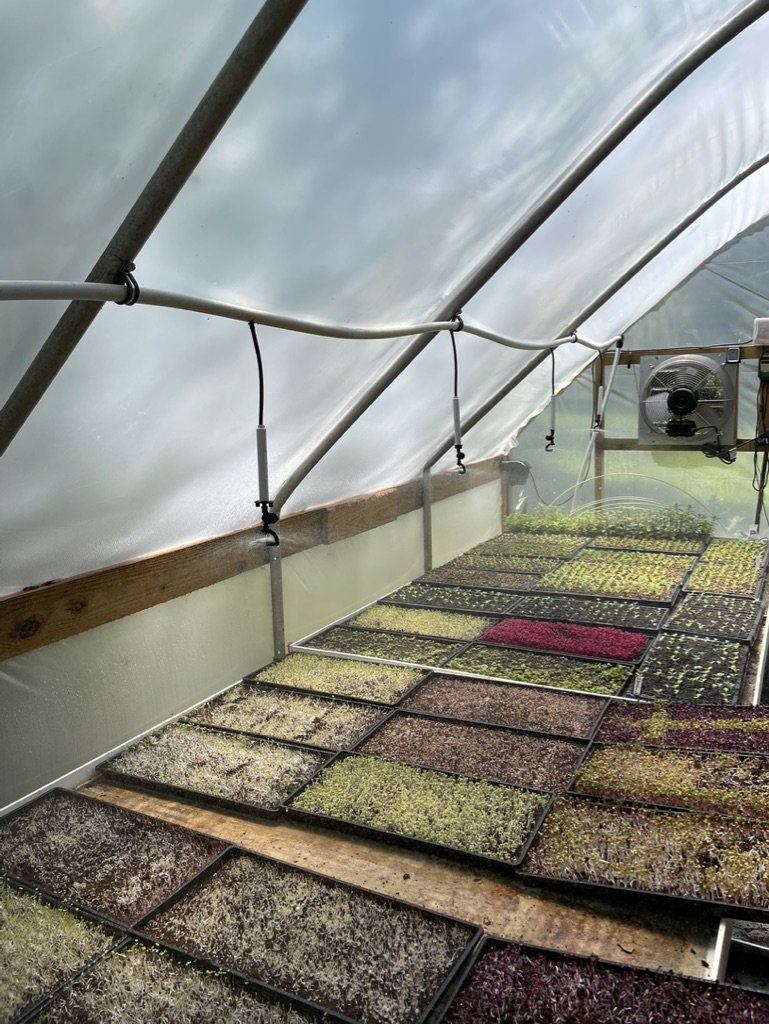The True Cost of Starting a Small Farm
The farmlet “Before” it was anything.
The same field ~3 years later
Have you ever wondered how much it costs to start a small farmlet like this? And how the heck to finance it?
How much it costs definitely depends on your size, your risk tolerance, your access to savings and loans, and all of those many variants. In the interest of transparency and sharing real-life examples have opened up my records to make sense of everything I have done over the past three years to set up the farm as it is today, going into its 4th season.
My farmlet as a case study
As you may know, I didn’t have savings or significant off-farm income when I started my farm business investments. So I immediately prepared a business plan and began the process of pursuing a seven year Farm Service Agency Microloan of 50K to help me establish the infrastructure and get the business operational on the land I already owned. Once sales were coming in I used those funds to make payments on my loan, and invest in more tools and start paying myself a little bit.
The process of securing a loan from the FSA was very slow, but ultimately I was able to secure the loan with the items I purchased with it, my “future” crops, and some of the equity in my home. In addition to the loan I also secured three grants for the farm totalling $18,621. One grant was a business pitch competition ($4000), the next grant was for offsetting the cost of a High Tunnel ($9261) from the NRCS, and the third Grant was for food safety improvements including tunnel construction, temp sensors and buried irrigation system ($5000). Through the combination of having access to the capital from the loan and the grants coming in I was able to make a significant number of initial infrastructure purchases to get production going.
What the numbers can & can’t tell us
What these numbers can’t tell us is a lot. You wont see the things I got for free, borrowed, already had, made from scraps, or traded to make the farm start-up process easier. You don’t see the direct costs of growing (like fertilizer, seed, labor, single-use materials). You don’t see how I have chosen to depreciate these expenses on my taxes. And of course you aren’t seeing the cost of my own labor, my neighbors and friends labor that worked for free to help me establish the farmlet. These numbers also do not include information on income and cost of good sold, and other overhead expenses that it takes to operate the farm.
What you do see are the costs of all the things I purchased and deemed ‘reusable for many years’ and felt like I needed them to set the business up with systems, and tools that could support me for many seasons. I’ve pulled all of these records from various accounts in my bookkeeping system, and believe they are quite close to accurate but I may have missed some tools here and there.
Why share this information?
I know… it feels so vulnerable to share my start up expenses with the internet. But when I was business planning I was desperate to see real-life actuals from other comparable farms and it just wasn’t available! The reason being is probably because nobody wanted to share, and/or they knew that farms are as different as their farmers, and the info isn’t easily transferrable. I also think that there is a lot of talk out there about it only costs “5k to start a farm” and while that could be possible its not a very helpful phrase, and contributes to the romanticized version of farming as a quaint, casual, or hobby type profession.
As I began planning the farm I asked myself what kind of farm do I want to start? and my answer rests on a few core values
-I want the work to be efficient and as easy as possible on our bodies
-I want to grow year round
-I want to have a high quality product, grown with food safety in mind
-I want to invest in tools that last
-I want to make the most of my small acreage
Let’s look at the numbers
The chart below shows you my expenses for the first three years: 81,807! Wow, that is a lot.
Next, we will see what was purchased over those three years, broken into specific categories.
Next, let’s peek into some of these complex categories to see what exactly was purchased. First let’s begin with “Big Infrastructure” where i’ve included my delivery vehicles, and other critical infrastructure purchased and built over three years. This is the biggest single category by far and includes many big ticket items. You may want to note that the tractor I use from time to time was previously owned by my husband, I just pay to repair & maintain it in exchange for using it on the farm.
Next is the “Farm Tools” Category. I also have several tools in my collection that were gifted to me, I made, or already had.
Next is “Nursery Supplies” which include everything I use for plant propagation in the nursery. In 2021 I got the cheap-o nursery flats, and by the end of 2023 I decided to switch to longer lasting Bootstrap farmer, winstrip & proptek trays.
Next is the “Field Growing” category which includes all the materials used (and reused for years) in the field. T-posts and conduit used for trellises, and weed barriers.
The next category is “Harvest & Packing” Tools. My harvest and pack was set up in a pre-existing shed on the farm, with mostly used, found, traded materials but these extra purchases were also needed.
Next lets look at Irrigation as a category and see just hoe many fittings it takes, and how the buried waterlines we put in in 2022 with frost free spigots are quite expensive, but also one of the most thrilling upgrades to the farm system.
Making sense of all those numbers
Whew…that makes my heart pound a little bit and makes me feel like I need to be more frugal, but at the same time I am glad I invested in myself and the vision of this farmlet so it could grow into what it is today.
Remember, I haven’t technically paid for all of this yet since I used the microloan to cover some of it (and still have 32K until pay-off) so these three year expenses are spread over a 7 year period. Also remember that I work my tail off to bring in income streams and grow the best possible product I can, so each year my goal is to put these tools to work for me, and see a return for it from which I can pay myself and re-invest in the farm as needed. I believe I haven’t truly captured the potential of all of these investments but that is part of what keeps things interesting and keeps me learning.
I completely understand that this info is unique to me, and might encourage one person and discourage another person with the same information.
I hope that future farmers, current farmers, or even partners of farmers will glean something useful from these records. Does it help you understand some of the costs of growing local food? Does it inspire you to start smaller or go bigger than I have? Maybe you thought you would farm as a hobby and you are now thinking you can’t afford to? Let me know if you found this information helpful. Thanks for reading.
